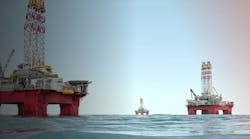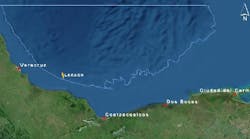Richard Lissack, QC
Fiona Horlick
Outer Temple Chambers
The readers of Offshore magazine are no doubt familiar with the events and consequences of the April 20, 2010 oil spill in the Gulf of Mexico: the explosion of the Deepwater Horizon oil rig and consequent injuries and loss of life; the uncontrolled flow of oil for 87 days; and the largest marine oil spill in the history of the industry. In July 2015, BP agreed to pay $18.7 billion dollars in fines, the largest corporate settlement in US history.
The tragic event prompted the European Commission to look urgently at the safety of offshore oil and gas activities. Initial investigations concluded that there was inadequate assurance that the existing regulatory framework and industry safety practices minimized risk from offshore accidents.
Three years later, the European Commission published the Directive on Safety of Offshore Oil and Gas Operations (Safety Directive). This aimed to reduce and limit both the occurrence and consequences of major offshore accidents, and it required changes to safety regimes and to other areas such as emergency response and environmental protection.
The Safety Directive's requirements matched the existing Offshore Installations (Safety Case) Regulations 2005 (SCR 2005) but it was more detailed, more onerous; and it contained some entirely new requirements. It also only applied to external waters whereas the SCR 2005 applied to both external and internal waters. As a result, the decision was taken to restrict the existing SCR 2005 to internal waters and to implement the Safety Directive though the Offshore Installations (Offshore Safety Directive) (Safety Case etc.) Regulations 2015 (SCR 2015) for external waters.
The SCR 2015 came into effect on July 19, 2015. The new requirements are integrated into UK law and will apply to operators of production installations and owners of non-production installations where those installations are situated or will be situated within the UK external waters - that is the UK territorial sea or the designated areas within the continental shelf. It is important to note that it is the physical location of the installation that brings the operator or owner within UK law, not the location of the operator or the owner, which may be outside the UK.
These new regulations will be treated as Health and Safety regulations under the Health and Safety at Work Act of 1974. They will be enforced by Health and Safety inspectors and the Department of Energy and Climate Change (DECC) inspectors. The HSE and DECC will be working in partnership and will comprise the relevant "competent authority."
The SCR 2015 are regarded as being key to the management of offshore health and safety and environmental major hazards, and they intersect and complement other regulations, integrating environmental protection within safety protection. The definition of "major accident" now includes any major environmental incident - that is an incident which results or is likely to result in significant adverse effects on the environment.
Some existing offshore regulations have been revoked to rationalize the regime and any continuing requirements have been placed within other offshore safety legislation.
Safety cases are required for all installations operating or to be operated in UK external waters. The definition of "installation" goes further than the Safety Directive in order to harmonize with existing UK regulations, and to counter concerns that some structures undertaking activities with major accident potential could fall outside the scope of the SCR 2015.
A safety case must be submitted to the competent authority. It is an offense, punishable by imprisonment and/or a fine, to operate an installation without a current safety case that has been accepted by the competent authority; or to fail to conform to it.
The duty to submit a safety case is generally placed on a single duty holder: the operator of a production installation or the owner of a non-production installation. There are further notification requirements; for example, if a production installation is to be moved to a new location in external waters or a non-production installation is converted to a production installation. If an operator wishes to establish a new production installation, notification must be sent at an early stage.
For existing production and non-production installations, they must have an accepted safety case by July 19, 2016, or by the review date of an existing safety case under the SCR 2005 (whichever comes earlier). The transitional provisions recognize that there is a five-year period to comply (from 2013) and that there are different transitional requirements for those installations that existed prior to the commencement of that five-year period.
The purpose of a safety case is to demonstrate that the duty holder has the ability and means to effectively control major accident risk and, as such, places an extra and rigorous level of regulatory control that builds upon existing regulations.
The safety case should be a comprehensive document covering risk control measures, safety and environmental management systems (SEMS) and verification arrangements. It is intended to be a living document and to be revised as appropriate. There must be a comprehensive review at least every five years. There is a duty to consult with workplace safety representatives and to properly consider any comments (but no duty to accept them).
A Corporate Major Accident Prevention Policy (CMAPP) is a compulsory element of the safety case. It should be a high-level overview of how the management of major accident hazards will be implemented. It should include the outline of arrangements for identification of all hazards with the potential to cause a major accident, the assessment of identified major accident risks and the suitable control measures.
Verification of the safety case is a key component of the SCR 2015. There is a duty to establish, put into effect and maintain a verification scheme. Failure to do so is an offense. An essential preliminary to developing an effective verification scheme is the identification of the installation's safety and environmental critical elements (SECEs). The requirements of verification are rigorous.
The safety case requires a well operator to have the well examined to ensure that it is properly designed, constructed, and maintained.
In any criminal proceedings for contravention of the regulations relating to verification and well inspection, which involve the appointment of a verifier and a well examiner, there is familiar strict liability defense. This involves taking all reasonable precautions and exercising all due diligence to avoid commission where the offense was due to the act or default of another person who was not an employee.
The competent authority has the power to prohibit operations where it judges that there are insufficient measures within a safety case to prevent or limit the consequences of a major accident.
Notification must be given "without delay" of a major accident or an immediate risk of a major accident. Such notification must include the potential impact on the environment and the potential major consequences.
The penalties for an offense committed by contravening a requirement or prohibition imposed under the SCR 2015 are a fine and/or imprisonment with a maximum of two years in the Crown Court or three months in the Magistrates Court in England and Wales or 12 months in Scotland.
Richard Lissack, QC, and Fiona Horlick are barristers with Outer Temple Chambers, a UK-based firm that provides bespoke legal services for solicitors, in-house counsel, professional clients and private individuals. They are experts in health and safety regulations, and in international business matters that involve fraud and asset recovery.




